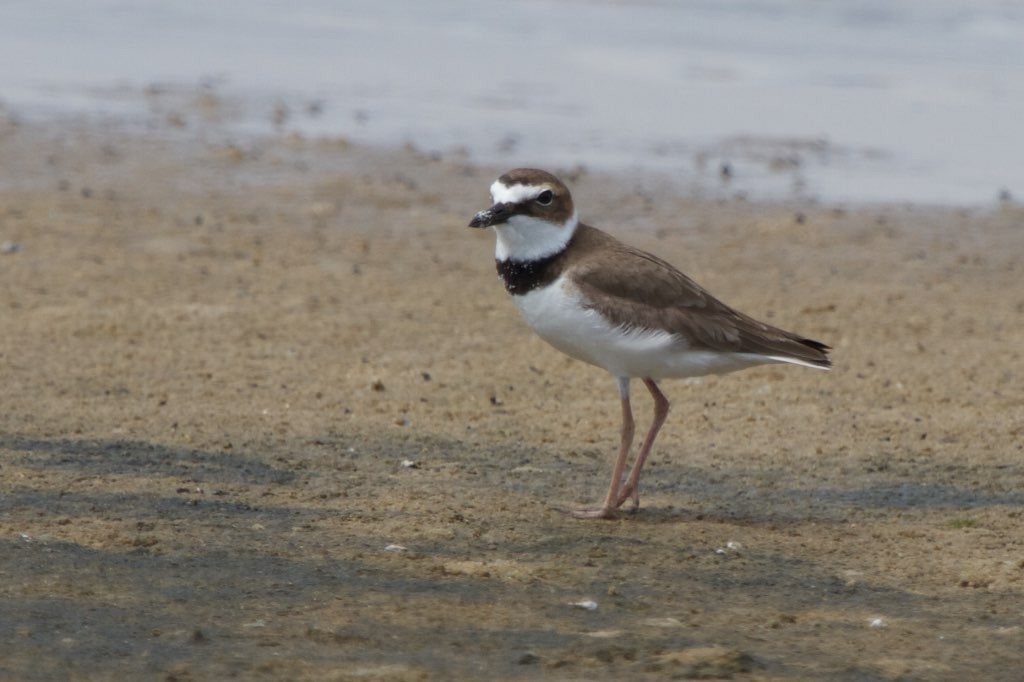Wilson's Plover
A species of Typical plovers Scientific name : Charadrius wilsonia Genus : Typical plovers
Wilson's Plover, A species of Typical plovers
Botanical name: Charadrius wilsonia
Genus: Typical plovers
Content
Description People often ask General Info
Description
The breeding male has a black breast band, lores and forecrown, and a rufous mask. Females and non-breeding males have a similar plumage, but the black of the breeding male is replaced by brown or rufous. Non-breeders have a greyer tint to the head and breast band. Immature birds are similar to the female, but the breast band is often incomplete. The adult's upper parts are mainly dark grey, with a short white wing bar and white tail sides. The underparts are white except for a breast band, and the legs are pink, brighter when breeding. The dark bill is large and heavy for a plover of this size. The call is a high weak whistle. Measurements: Length: 6.3-7.9 in (16-20 cm) Weight: 1.9-2.5 oz (55-70 g) Wingspan: 19 in (48.2 cm) 
Size
18-20 cm (7-8 in)
Nest Placement
Ground
Feeding Habits
Wilson's Plover primarily feed on marine invertebrates such as fiddler crabs, which constitute up to 99% of their diet in some areas. They also consume insects, marine worms, shrimp, sand flies, dragonflies, and tiny mollusks. They forage during the day and night on falling tides, utilizing a run and lunge technique to catch prey before shaking it to remove the legs for easier consumption.
Habitat
Wilson's Plover favor coastal habitats with high salinity, reflected in environments like salt flats, coastal lagoons, and sand dunes. They are also found in human-altered landscapes such as dredge spoil islands and salt evaporation ponds. These birds nest at low altitudes in warm climates and prefer foraging along lagoon margins rich in prey like fiddler crabs. Vegetation in their habitats ranges from sparse grasses to robust plant communities.
Nest Behavior
Wilson's Plover nests involve the male making several scrapes, from which the female selects one. The nesting process includes minimal construction, and both parents partake in incubating eggs and caring for the chicks.
Nest Characteristics
Wilson's Plover's nest is a simple scrape on the ground, often in sandy or shelly areas, with potential proximity to driftwood. It may contain shells, pebbles, or wrack, measuring around 3.2 inches across.
Dite type
Aquatic invertebrate eater
People often ask
General Info
Feeding Habits
Bird food type
Sounds
Call
Recording location: United States
Call
Recording location: Venezuela
Behavior
Wilson's Plover engage in monogamous relationships and exhibit striking courtship displays during nesting season. These birds adeptly defend their territory with notable warning displays and collaborate to fend off threats to their brood. In their daily routine, wilson's Plover demonstrate a strong parental instinct, sharing incubation and chick-rearing responsibilities. Post-fledging, families often gather in aggregations, maintaining the cooperation in predator defense observed during nesting. A characteristic behavior of wilson's Plover is their broken-wing act, a strategic deception to protect offspring from harm.
Species Status
Not globally threatened.
Scientific Classification
Phylum
Chordates Class
Birds Order
Shorebirds Family
Plovers Genus
Typical plovers Species
Wilson's Plover 